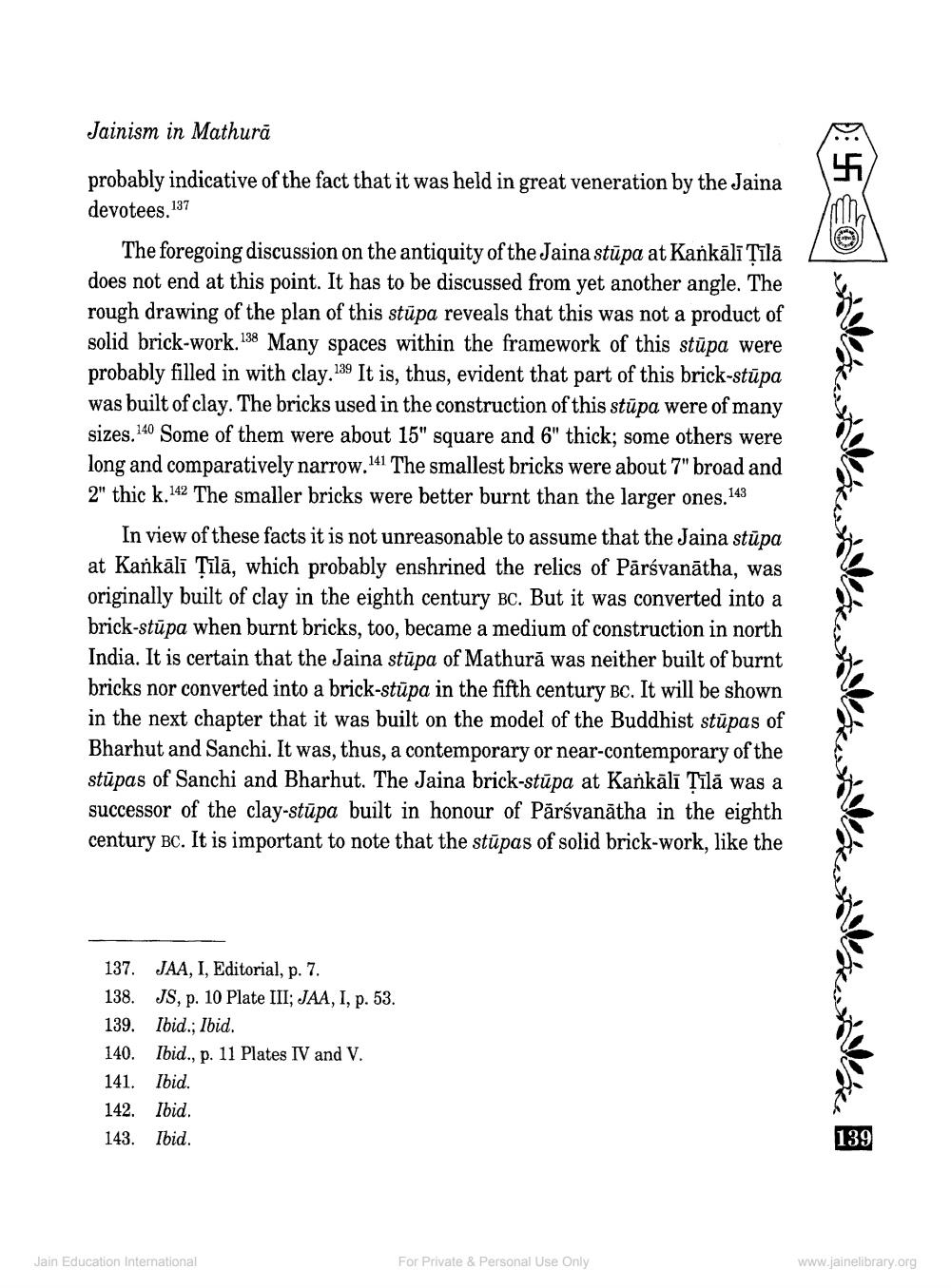________________
Jainism in Mathurā
probably indicative of the fact that it was held in great veneration by the Jaina devotees. 137
The foregoing discussion on the antiquity of the Jaina stūpa at Kankālīļīlā does not end at this point. It has to be discussed from yet another angle. The rough drawing of the plan of this stūpa reveals that this was not a product of solid brick-work. 138 Many spaces within the framework of this stūpa were probably filled in with clay. 139 It is, thus, evident that part of this brick-stūpa was built of clay. The bricks used in the construction of this stūpa were of many sizes. 140 Some of them were about 15" square and 6" thick; some others were long and comparatively narrow. 141 The smallest bricks were about 7" broad and 2" thic k.142 The smaller bricks were better burnt than the larger ones. 143
In view of these facts it is not unreasonable to assume that the Jaina stūpa at Kankāli Tilā, which probably enshrined the relics of Pārsvanātha, was originally built of clay in the eighth century BC. But it was converted into a brick-stupa when burnt bricks, too, became a medium of construction in north India. It is certain that the Jaina stūpa of Mathură was neither built of burnt bricks nor converted into a brick-stūpa in the fifth century BC. It will be shown in the next chapter that it was built on the model of the Buddhist stūpas of Bharhut and Sanchi. It was, thus, a contemporary or near-contemporary of the stūpas of Sanchi and Bharhut. The Jaina brick-stūpa at Kankālī Tīlā was a successor of the clay-stūpa built in honour of Pārsvanātha in the eighth century BC. It is important to note that the stūpas of solid brick-work, like the
137. 138. 139. 140. 141. 142. 143.
JAA, I, Editorial, p. 7. JS, p. 10 Plate III; JAA, I, p. 53. Ibid.; Ibid. Ibid., p. 11 Plates IV and V. Ibid. Ibid. Ibid.
Jain Education International
For Private & Personal Use Only
www.jainelibrary.org




